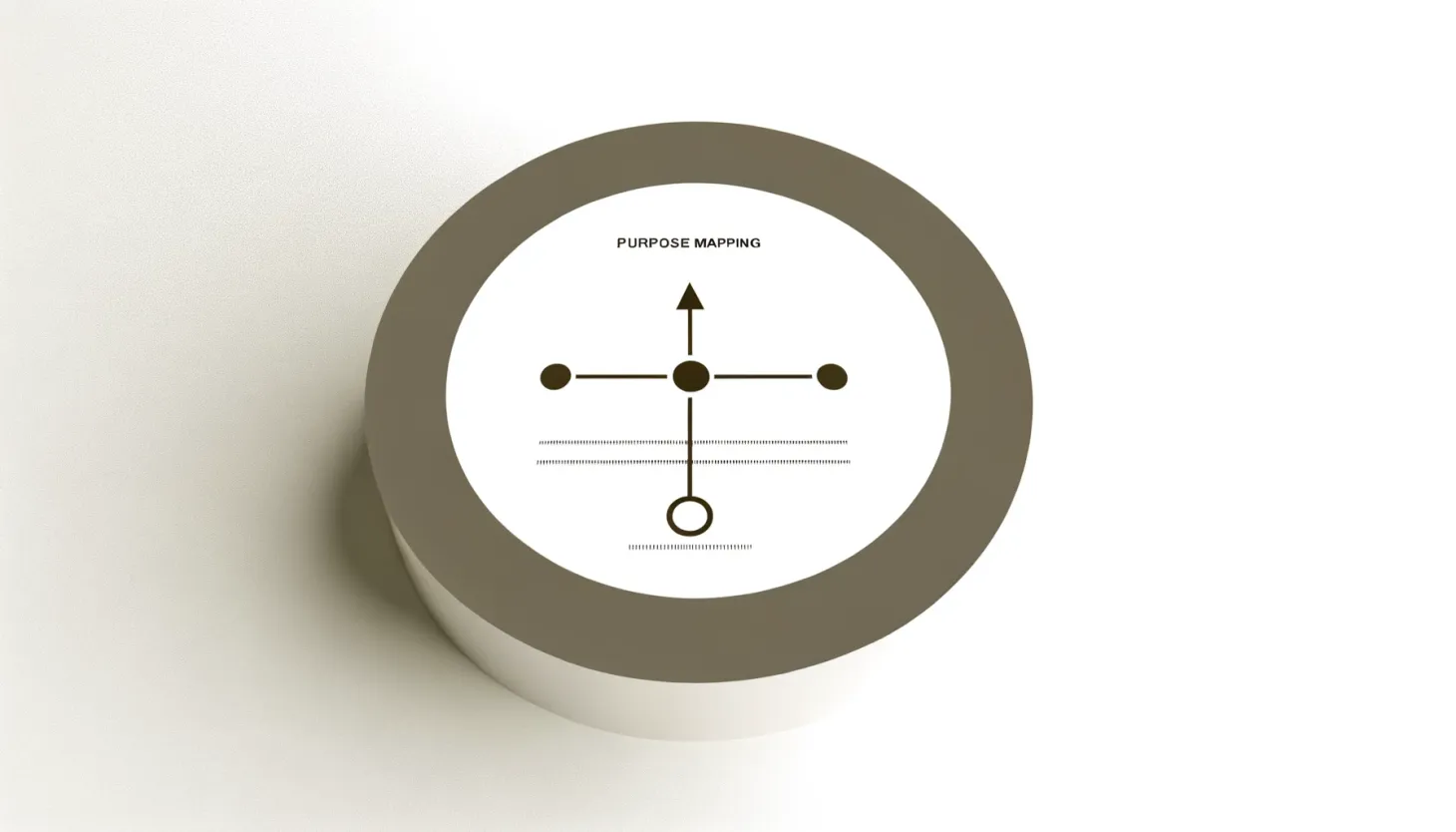Purpose Mapping

Table of Contents
I've explained why you need to know your company's Purpose and how it will impact how you pursue your Mission. Most managers can easily understand if they're executing well against their Mission. Missions tend to be concrete and measurable. You are either on schedule or not on schedule. You either meet or exceed your projected revenue.
But how do you determine if you're meeting your Purpose other than mindlessly assuming that your Mission supports it? Another challenge managers face is understanding if theY and their team align with the company's Purpose.
Purpose Mapping can help you solve both problems by mapping the management pillars to your company's Mission and Purpose. Why would you want to map management pillars to your company's values? The company values may matter to you because, typically, you'll see these values used in your performance evaluation system. At the end of the year, you'll have to think about demonstrating that you and your team are aligned with the company's Purpose. Managers struggle with this when the company's Purpose is vague or hard to measure. Let's imagine a company that has the following Purpose:
We are here for one purpose: to help build a better world where every person is free to move forward and pursue their dreams.
This isn't an imaginary Purpose statement but the Purpose statement for Ford Motor Company. As a manager working through evaluations, how do you determine if you and your team meet that Purpose?
I'm sure Ford breaks that down into values supporting that Purpose. Suppose they're:
- We enable freedom to move
- We help people pursue their dreams
- We're builders and innovators
- Every action we take is towards the goal of making things better.
Now, look at our management pillars:
- People
- Execution
- Communication
- Collaboration
- Organization
- Finance
Value: We help people pursue their dreams
- People - We can look for people who can seize opportunities and grow with us. We help train people so they have the skills they need to meet their dreams.
- Finance - We set a yearly training budget so that each person can pursue their dreams.
Value: We're builders and innovators
- People - We seek to increase our ability to build and innovate. We want to help those who want to innovate find roles in the company that allow them to grow.
- Collaboration - We set aside time every quarter for people to innovate outside their day-to-day work. We seek out opportunities for cross-functional collaboration between departments to build and innovate.
Value: Every action we take aims to make things better.
* People - we provide a career plan for every employee and help guide them on a path that they find better for them.
- Organization: We create teams and units aligned to our Purpose and publish OKRs for each unit. We are transparent about our metrics and measures of success.
You're trying to use each of the pillars to make specific, measurable statements supporting the company's values and Purpose. Usually, managers are stuck trying to determine how the values are measured and what they mean individually. Going through a purpose mapping exercise lets you create specific and measurable statements that you can use to evaluate your employees. The exercise is designed to remove any bias you may have on an individual level but instead use the exact mapping across all your employees equally.
You can do a purpose mapping on your own, but it's better to do it with a group so that you can pull in different perspectives. The critical thing is that you're trying to convert something subjective (like company values and Purpose) and make it concrete via the pillars in this book. If you can tie it into the pillars, you will manage to do it daily, meaning you embody the company's values. But you can do it in a "portable" way as a manager, which means you can grow your career and take it with you as you move from one job to another (inside or outside the firm).
Conducting Purpose Mapping
If you're by yourself, make a spreadsheet (or download our template) like the following. The rows are the management pillars, and the columns are the various values (e.g., Put people first, be curious, build tough, etc.). You can put an X for any column that maps to a pillar for a first pass. Then, write down your justification for why you marked it that way. Here are other examples:
Organization: Are you curious about how your team fits into the whole? Do you know what part you and your team play in delivering your products? How do other parts of the organization depend on you, or do you rely on them? Have you organized your work so that you can tolerate the possible risks you may encounter? All of those require you to "be curious" about your role in the company. Organization can also include finding out information about your organization - like do you understand how teams and people relate to each other (e.g., the org chart)
Leadership: You want to be curious about how your team can help solve the company's and customer's problems. You investigate the issues, research their problems, and propose solutions to test the market. If your solutions don't work, you have the intellectual curiosity and integrity to 'be curious' about why they didn't work. For example, Thomas Edison stated:
I have not failed 10,000 times. I have not failed once. I have succeeded in proving that those 10,000 ways will not work. When I have eliminated the ways that will not work, I will find the way that will work. []
People: you're curious about how to help people grow in their careers. What are their aspirations, what excites them, and why are they working at the company? How can you help them get to where they want to be in the company and their career?
If you're able to do it with a group of people
You can approach it like the single version but try to do it more collaboratively using a whiteboard (physical or virtual) and dot voting. FIXME explain or link dot voting.
Process:
- Put each management foundation on the side and give each a symbol (a dot sticker, whiteboard marker note, sticky note, etc.)
- Put your company's purpose statements (or the high-level word corresponding to a lengthy statement) on the board.
- Have each person put their "vote" on board - e.g., take the dot for Finance and put it by any purpose statements with a finance component. Voting like this works best when everyone can vote simultaneously (as a group) vs. having each person go in turn (and by bias by other votes or group members). It's vital to keep judgment out of this phase for two reasons - 1. you want to be inclusive and considerate, and 2. you don't want to silence one of your fellow managers during this exercise. One of the reasons you do it in a group is to get that collective group buy-in, which will pay massive dividends down the road (e.g., during Performance Calibration).
- After everyone has voted, walk through each Purpose and discuss why people voted the way they did. If there's a consensus around the foundation mapping to the Purpose, explain why it maps that way. I wouldn't edit heavily here; write down what people are saying (don't attribute them; again, it will support the group down the road, not the individual manager).
- Now, map those statements to the IC and manager rubrics. For ICs, you have a solid career mapping with your existing rubric, including your company's Purpose and Mission. A Purpose Map should help you immensely when you do your end-of-year evaluations. For managers, you can now map the foundation skills, manager rubric, and company's Purpose and Mission. This should allow you to precisely map each manager's strengths, weaknesses, and opportunities.
At this point, you should be able to map the management pillars to your company values concretely and can assess your team this way.
Frank Blecha Newsletter
Join the newsletter to receive the latest updates in your inbox.




